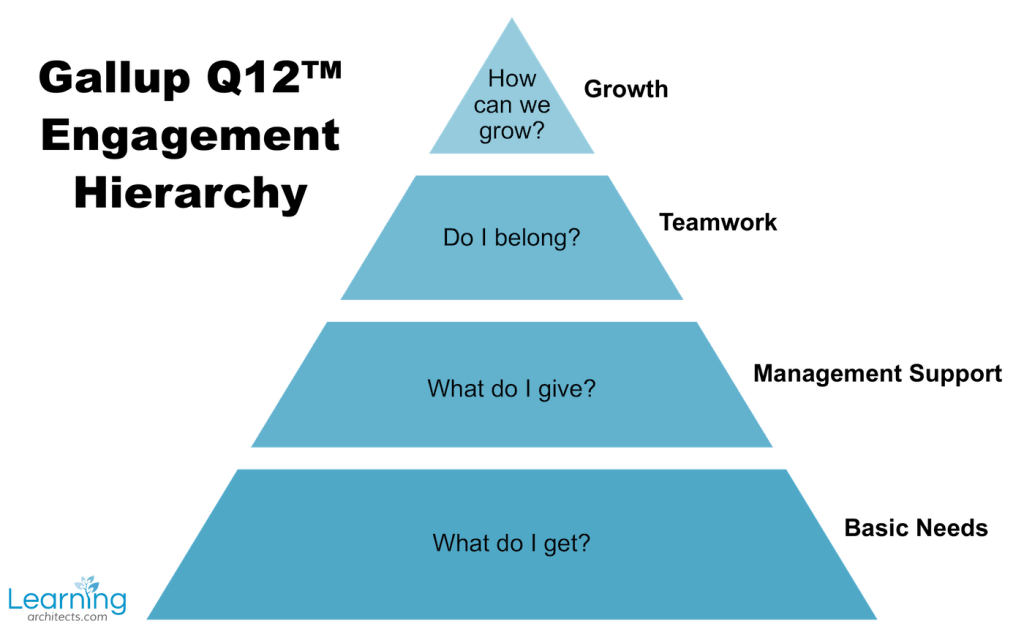How employee engagement leads high performing organisations

Do you know how emotionally engaged your employees are? Really? I recently attended a two-day professional learning session run by Gallup in Wellington called Engagement Champion Training, which gave me new knowledge in how Gallup’s Q12™ Engagement Matrix can be used to help develop highly engaged workplaces, by measuring the degree to which an employee is emotionally engaged in their role. I learned that employee engagement is the way towards developing healthier organisations. Not only is it the way towards healthier organisations, it is also the way towards developing a more productive and effective team in organisations.
Since becoming a Gallup-certified Strengths Coach, I have been wondering how strengths and engagement work together. I’ve also been considering how we can develop healthier, more productive and happier workplaces through the use of strengths – the answer is through Engagement. As it turns out, the work we do with Strengths Coaching is a powerful way to develop one of the twelve aspects of engagement.
The Relationship between Strengths and Engagement…
One of the questions I explored during the course is what is the relationship between employee engagement and strengths? I wanted to find out how they complement one another. What I realised is that the answer to this lies in understanding how the Q12™ Engagement Survey tool works.
The Q12™ survey tool comprises the 12 questions that best predict engagement at work.
These 12 questions have been extensively researched using millions of employees across thousands of organisations for well over 20 years; it is the largest dataset in the world of this type of information.
How the Q12™ is organised…
Each of the Q12™ questions are organised in a hierarchical manner and are grouped into four areas:
- Basic needs – or what do I get as an employee
- Management support – or what do I give as an employee
- Teamwork – or do I belong in my workplace
- Growth – or how can we grow in our workplace
These four areas, with their associated questions and the subsequent answers people provide to the Q12™ survey, have been shown to be the best indicators of how emotionally engaged people are in their workplace. Being emotionally engaged is far more than just ‘satisfied’, it is more about being psychologically committed.
Gallup research shows that both employee engagement and employee satisfaction relate to meaningful outcomes. However, satisfaction is a broad, attitudinal outcome, like organisational loyalty or pride. Measuring employees’ contentment doesn’t improve outcomes. Engagement, on the other hand, predicts satisfaction, as well as many other concrete aspects.
Being able to identify exactly where the organisation needs to turn its attention in order to improve next gives us very specific and actionable information we can use to improve – this is where the Q12™ provides a powerful tool.
This short video gives you an overview of the Q12™ and its benefits:
In essence, using engagement and the Q12™ will attune you and your leaders to more effectively meet the needs of your team, thus creating a much more effective workplace. It doesn’t ask a lot of questions, it asks the right questions.
More Information…
If you would like to receive further information about engagement and an example of a Q12™ report please give us your details here:


Facebook Comments